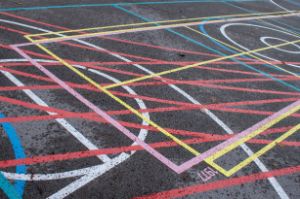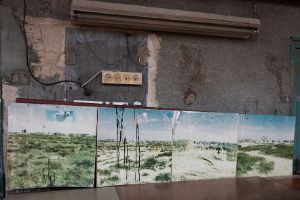
,%20La%20Grande-Delle,%20H%C3%A9rouville-Saint-Clair,%20Nordfrankreich,%201968,%20%C2%A9%20Xavier%20de%20la%20Sall.jpg)
Group Ludic, "spheres on stilts", La Grande-Delle, Hérouville-Saint-Clair, Nordfrankreich, 1968, © Xavier de la Salle
The Playground Project
Curated by Gabriela Burkhalter
Where better to reflect on life in the city than on the playground? It is a cosmos of its own and at the same time a focal point for social issues such as childhood, education, public space, autonomy and control. Almost 20 years ago, Gabriela Burkhalter began researching and documenting the previously unknown history of playgrounds. The resulting exhibition and research, The Playground Project, grew over the years and has now arrived in Berlin.
The exhibition presents the history of the concept of playgrounds, mainly in Europe but also in various contexts from around the world. It unravels some moments in the philosophy of play from around 1880, when social reformers aimed to get children off the streets. During the 1930s, especially in Scandinavia, it was believed that children should play with more natural materials for the purpose of creative self-determination. From 1968 onwards, local groups were motivated by the idea of self-empowerment and built their own playgrounds. During the 1980s, the field of playground design experienced a crisis in the countries of the West, reflecting the dwindling utopian mindset, the retreat of state responsibility and economic deregulation, while societies in the communist block continued to cultivate communal activities. The exhibition guides visitors through these multifaceted interactions and the underlying forces that determined them.
The Playground Project also focuses on 100 years of playground history in East and West Berlin, and the healing potential of play in public spaces. Above all, it shows adventure playgrounds as the original form of self-determined play as well as activist and collective projects such as the Kounkuey Design Initiative in Nairobi or Ankur in New Delhi. These urban sanctuaries promote the political significance of play as a form of community- building and crisis management at the same time. After all, play is important everywhere.
And in the middle of it all there’s a looping Lozziwurm – the legendary play sculpture by Yvan Pestalozzi from 1972 – cheekily and impatiently waiting for all the children, big and small, who want to play with it!
The Playground Project is an on-going traveling exhibition curated by Gabriela Burkhalter. It is based on the research project architekturfuerkinder.ch, which the political scientist and urban planner has been working on since 2006. The Playground Project was originally conceived for the 2013 Carnegie International in Pittsburgh mand evolved into a playable exhibition for Kunsthalle Zurich in 2016. It then toured, among others, to DAM - Deutsches Architekturmuseum in Frankfurt/Main, and Bundeskunsthalle Bonn, and is now part of Radical Playgrounds: From Competition to Collaboration in Berlin. The accompanying catalog The Playground Project was published in three, constantly expanded editions (2016, 2018, 2023), and features initatives in Western Europe, the US, GDR, India, Hong Kong, Kenya and Mexico.
